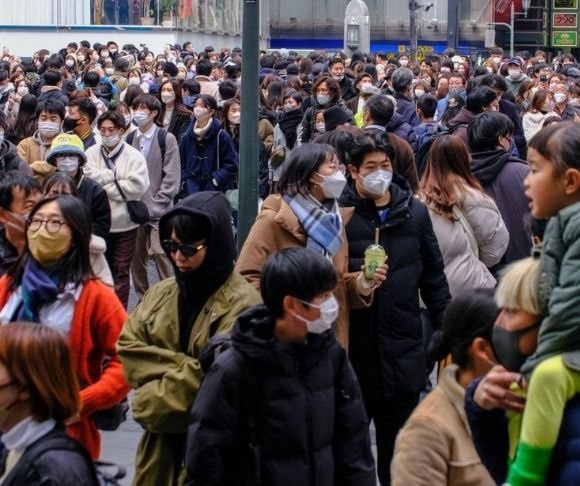Billionaire CEO Elon Musk perturbed the globalists in October of 2022 when he tweeted that “population collapse due to low birth rates is a much bigger risk to civilization than global warming.” Contrary to the doomsayers who declare the world is getting too full, the global growth rate has been slowing down. This could threaten the most fundamental components of society, be it federal retirement benefits or the labor force. China and Japan are in panic mode as their population sizes are shrinking.
A Population Collapse in China, Japan
 Today, Japan is experiencing one of the lowest birth rates on the planet. The government projects that the country will report fewer than 800,000 births for 2022; the lowest annual increase on record. At the same time, Japan also enjoys one of the highest life expectancies in the world at 84.62 years.
Today, Japan is experiencing one of the lowest birth rates on the planet. The government projects that the country will report fewer than 800,000 births for 2022; the lowest annual increase on record. At the same time, Japan also enjoys one of the highest life expectancies in the world at 84.62 years.
Japanese Prime Minister Fumio Kishida issued a dire warning on Jan. 23 about the nation’s population crisis, observing that the world’s third-largest economy is “on the brink of not being able to maintain social functions” amid a plummeting birth rate. He told policymakers in Tokyo that it is “now or never” to resolve this crisis, proposing to double what the government spends on child programs and establishing a new government agency this spring. This comes soon after the government offered $38 per person per month for Tokyo residents aged 18 or younger to help parents pay for their children’s education.
“In thinking of the sustainability and inclusiveness of our nation’s economy and society, we place child-rearing support as our most important policy,” the prime minister said.
Critics assert that these are short-sighted attempts to solve systemic challenges, citing enormous hospital charges when children are born and exorbitant secondary and post-secondary costs. When static wage growth enters the equation, economic challenges begin to mount in Tokyo.
China’s situation is not that much better. In 2022, according to the National Bureau of Statistics (NBS), mainland China reported the first population decline since the 1960s. The number of people living in China decreased by 850,000 to 1.1 billion last year: 9.56 million births and 10.41 million deaths. However, Beijing has attempted to reverse this trend by abandoning its one-child policy. But is this part of a long-term challenge for China or a blip on the radar? Indeed, the coronavirus pandemic, the COVID-Zero strategy, and the economic downturn could have weighed on households’ decisions to have kids. This might not be a one-off; China’s population expanded by the slowest increase on record in 2021, NBS data revealed.
American Babies

(Photo by: HUM Images/Universal Images Group via Getty Images)
Since the 1950s, the US birth rate has steadily fallen as American women are having fewer babies. Recent figures from the CDC’s National Center for Health Statistics (NCHS) show an enormous decline in fertility rates. By 2019, the average birth-rate among females aged 15 to 49 was 1.3 children, while the number of women having a first child at 35 or older “increased ninefold between 1972 and 2012.” Overall, the study concluded that “the mean number of children ever born per woman declined, from three children to two” between 1976 and 2018.
Meanwhile, seniors over 65 represent nearly one-fifth of the US population, totaling approximately 54 million. By 2060, the number of Americans 65 and older is forecast to climb to 95 million.
Change is Needed
Although the number of people who want children has held steady for years, close to half of the United States under 50 do not think they will ever have a kid or two, according to a Nov. 2021 study by Pew Research. The reasons vary; from the rising cost of living and growing uncertainty in the economy to a desire for more leisure time. But the excuses might not matter much, considering that the world’s largest economies need more bodies to ensure social programs remain intact, jobs are filled, and infrastructure is maintained.
The birth rate, be it in the US or China, is below the replacement rate. This will ultimately weigh on every component of dependent societies in the future, from lower Social Security payments to fewer government support programs due to smaller numbers of taxpayers. Therefore, elected officials may need to address tomorrow’s problems now. But, of course, with politicians focused on the next election cycle and scoring political points, it is implausible to believe that anyone will consider thinking about life in 2050 unless they are concerning themselves with solar panels and windmills.




